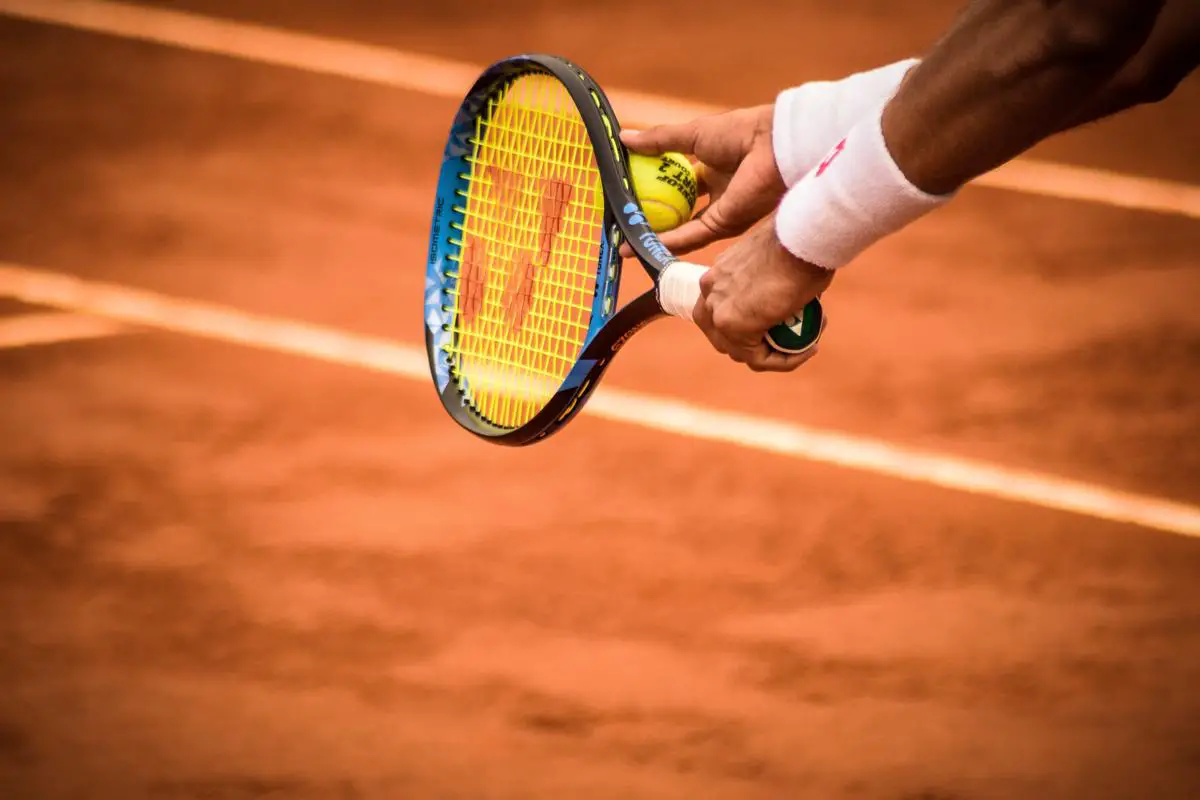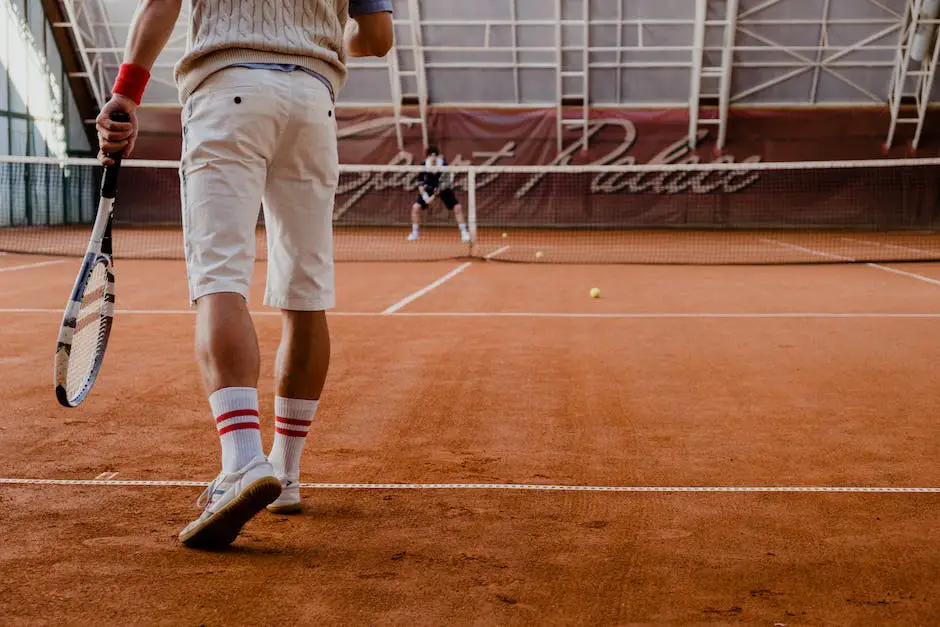Since its inception in 1891, the French Open, otherwise known as Roland-Garros, has grown to be an integral part of the Grand Slam tournaments in tennis. Originating as a national tennis championship for French club players, the French Open has since evolved into a pivotal global event that attracts tennis professionals from all around the world. The tournament’s rich history spans over a century and is brimming with significant milestones, notable personalities and remarkable records that have not only driven the course of professional tennis but significantly impacted bigger cultural and societal narratives. It’s the storied past of the French Open, along with its modern-day complexities and future prospects, that make this Grand Slam tournament a compelling subject of study.
Origin and Early History of the French Open
Origins of the French Open: The Birth of a National Championship
The French Open, also known as Roland-Garros, is now considered one of the most significant tennis tournaments in the world – one of the four Grand Slam events, and the only one to be played on clay courts. But this world-famous event had humble beginnings. The inaugural French Championships were held in 1891, but until 1925, they were a rather limited affair. The championship was exclusive to members of French tennis clubs, and was played on the grounds of the Racing Club de France in Paris.
Only seven players competed in the very first French Championships, and the winner was a 27-year-old Briton named H. Briggs, who was a member of Club Stade Français which thus qualified him to participate. Despite its restricted participation, the French Championships grew in prestige and popularity over the next thirty years.
Breakthrough in Early 20th Century: The Tournament Goes International
The French Open as we know it today only truly originated from the decision in 1925 to open the French Championships to international competition. The same year saw the tournament move to a new venue, the Stade Français club’s location at the Porte d’Auteuil, where the tournament has remained ever since.
The first edition of the internationally-inclusive French Championships was won by Rene Lacoste, one of the famous “Four Musketeers” of French tennis. Together with Jean Borotra, Henri Cochet, and Jacques Brugnon, Lacoste dominated men’s tennis in the late 1920s and early 1930s and helped build the reputation of the newly international French Open.
The Evolution of the French Open: From Local Competition to Global Grand Slam
The French Championships evolved into the French Open in 1968, a pivotal moment that recognized professional players and permitted them to compete within the tournament. This shift opened the doors to an unprecedented level of competition and international interest. Ken Rosewall from Australia and Nancy Richey from the United States were the first winners of this open-era event, highlighting the scale of talent that had been previously excluded under the strict amateur-only policy.
As the tournament progressed, so did its prestige and popularity. The prize money grew exponentially, reaching over €40 million by 2021. The event extended beyond the initial men’s singles to include women’s singles, and later men’s and women’s doubles. In 1902, a mixed doubles event was introduced and in 1968, it became fully international in synch with the singles tournament.
In the present day, the French Open stands as a key event in the annual tennis schedule. Known for its tough clay courts and storied past, the tournament has transformed from its humble beginnings as a national championship to a high-profile international competition, drawing the world’s top tennis players.

Photo by gonchifacello on Unsplash
Significant Milestones and Highlights
The Genesis of the French Open: Tracing the Initial Milestones
Known widely as Roland-Garros, the French Open boasts a rich history that takes us back to its establishment in 1891. Originally, it started off as a domestic tournament named the French Championships, and participation was restricted to members of French clubs only. The inception year saw a groundbreaking win by H. Briggs, a British player who belonged to the Club Stade Français. His victory marked him as the first non-French player to conquer the Championships.
The Golden Era: The Rise Of Tennis Legends
In 1925, the tournament was opened up to all tennis players, thus marking the beginning of the French Open as known internationally today. This was a significant milestone for the tournament. It set the stage for legendary roll call winners in subsequent years such as Suzanne Lenglen in 1925, and Henri Cochet in 1926.
Post-World War II: A New Era of Competitions
After World War II, the entire world saw significant changes, and so did the French Open. The tournament shifted from being predominantly a clay-court championship to accepting competitors from international players. In 1946, Marcel Bernard gave France its first Post-War men’s singles championship victory.
The Open Era: The Advent of Grand Slam Championships
With the arrival of the Open Era in 1968, the French Open became a grand slam tournament. Professionals were allowed to compete with amateurs. An unexpected upset was witnessed during the first Open Era French Open when Ken Rosewall, an amateur-turned-professional player, clinched the men’s singles title over favorite Tony Roche.
Historic Wins: Shaping the Modern French Open
Chris Evert emerged victorious in 1983, marking her 5th French Open win, the most in history at the time. Rafael Nadal etched his name in history in 2005 by winning his first French Open at the early age of 19. Nadal then went on to break the record by clinching his 10th French Open win in 2017, earning him the nickname “King of Clay”.
The 21st Century: Persistent Progress and Unprecedented Events
Serena Williams emerged as the Women’s Singles victor in 2002, following a 3-year long Grand Slam drought. This marked the start of the “Serena Slam,” where Williams held all four major titles at once.
In an unprecedented event, the 2020 French Open was pushed from its usual May-June scheduling to September-October due to the COVID-19 pandemic. Though this disrupted the traditional tennis calendar, it showcased the tournament’s flexibility and commitment to player safety.
Renowned for being a stage for profound exhibitions of talent and landmark achievements, the French Open has persistently held a compelling presence in the realm of tennis. From the pivotal transition to the Open Era to the historic victories of tremendous players like Rafael Nadal, the tournament’s distinctive history continues to captivate audiences worldwide.
Championship Records and Major Contributors
An Examination of Ground-breaking Performances at the French Open
Often referred to as Roland-Garros, the French Open boasts a formidable legacy marked by extraordinary matches and a level of athleticism that remains unmatched.
The legendary Rafael Nadal firmly stands as a notable figure in French Open history. As of 2021, he has clinched the championship 13 times, a feat unrivaled by any other male player. His domination extends beyond the boundaries of the French Open and represents the most significant number of victories in a single Grand Slam event during the Open Era.
Apart from its reputation for prolific champions, the French Open is also famous for hosting some of the most enduring matches in Grand Slam history. One such record-breaking game took place over two days in 2004, battled out between French players Fabrice Santoro and Arnaud Clement. This extraordinary match spanned six hours and 33 minutes, carving an indelible record in the annals of French Open history.
Youngest and Oldest Winners
In addition to records for the most wins and longest matches, the French Open also lays claim to records for the youngest and oldest winners.
In the history of the French Open, the youngest ever singles champion on the men’s side is Michael Chang, who won the tournament at the tender age of 17 years and 3 months in 1989. For the women, the youngest winner is Monica Seles. She took the title in 1990 when she was just 16 years old.
In terms of the oldest winners, Andrés Gimeno holds the record on the men’s side. He won the French Open at the age of 34 years and 10 months in 1972. For the women, the free-spirited and talented Serena Williams is the oldest winner. She took the trophy home in 2015, at the age of 33 years and 8 months.
Significant Players of the French Open
Remarkable impacts on the history of the French Open have been made by a number of renowned players. One such player, Sweden’s Bjorn Borg, amassed six titles in the late 70s and early 80s. His record was unchallenged until it was eventually surpassed by the legendary Rafael Nadal. On the women’s side, Steffi Graf made her lasting impression, clinching six singles titles throughout her illustrious career.
Even players who haven’t claimed the championship title have left their marks. Taken as an example, John Isner from the US, known for being a part of the lengthiest match in terms of games played in the 2012 French Open, though he did not emerge as the winner. This staggering record-setting match, composed of 76 games, lasted for a mind-boggling duration of over five hours.
Historically, the French Open has welcomed a remarkable lineup of tennis talents on its clay courts. The impressive records of these participants have significantly shaped the history of the tournament and the sport in its entirety.

Impact and Significance in Tennis and Beyond
The French Open: An Important Cornerstone in Professional Tennis
Founded in 1891, the French Open stands as one of the four prestigious Grand Slam tournaments, alongside the Australian Open, Wimbledon, and the US Open. Hosted each year at Roland-Garros in Paris, it proudly bears the distinction of being the sole Grand Slam played on clay courts—a type of surface that inherently demands unique strategies, exceptional mental fortitude, and unmatched physical resilience. This special characteristic within professional tennis has elevated the event’s importance, enriching the diversity in skill set of the champions who manage to triumph.
Characterized by its exhausting matches owing to the slow nature of the clay surface and the five-set men’s singles matches without a deciding tiebreak, the French Open is often viewed as the most physically challenging tournament in the world of tennis. This demanding aspect has played a pivotal role in molding the careers of numerous tennis icons, particularly Rafael Nadal. Nadal’s awe-inspiring performances in the French Open earned him the epithet “King of Clay.”
Cultural Significance in France
Beyond the sports realm, the French Open holds deep cultural significance for the people of France. It has become associated with the beginning of summer and is an event that brings together the entire nation and many international visitors. The tournament carries a strong sense of national pride, further amplified through dedicated coverage from French media.
In addition, the French Open is more than just a tennis tournament; it provides a platform for French culture and heritage to be showcased internationally. With its quaint yet magnificent Roland-Garros setting, fashion statements and gastronomic delights, the tournament beautifully blends world-class sport with French elegance, exemplifying French joie de vivre.
Role in Advancing Sports Equality
The French Open has played a key role in fostering equality in sports. Importantly, the tournament became the first Grand Slam championship to offer equal prize money to men and women in 2006. Today, it is part of the norm across all Grand Slam tournaments, but the French Open led the way.
Moreover, the French Tennis Federation (FFT) has always been committed to the promotion and development of women’s tennis. As early as the 1890s, women were encouraged to participate in the French Open, unlike many other tournaments of that era. The tournament’s history includes legendary women players like Suzanne Lenglen and more recently Serena Williams, who have not only dominated the court but also made significant contributions to advocating for women’s rights in sports.
Influence on Tennis Globally and in the USA
The French Open’s influence extends beyond France and Europe. It has a vast global audience, including a significant following in the United States. The tournament has encouraged a more comprehensive and diverse approach to tennis in the US, specifically due to its slow clay court surface, which requires players to adapt their strategies and styles of play, thus broadening their skills and competitiveness.
American players have had a rich history of participation and success at the French Open. From Chris Evert’s domination in the 70s to Andre Agassi completing his career Grand Slam in 1999, and Serena Williams’ remarkable performances in the 21st century – the contributions of American players to the French Open narrative have been significant. These accomplishments, televised across the US, have inspired countless American athletes, further enhanced the popularity of the sport, and strengthened bilateral ties between the US and France.
Renowned not just as a tennis tournament, the French Open exemplifies the essence of sportsmanship, international unity, equality, and culture. It stands as a testament to the grandeur of history and has an unfaltering grip on contemporary relevance.

Recent Years and The Future of The French Open
Modern French Open Era: Rise of New Tennis Prodigies
Known as Roland-Garros, the French Open has persistently unfolded unpredictability and fervor, creating an entity personified by surprise and spiritedness. Over recent years, it has borne witness to the emergence of fresh champions who have further enriched its dynamism.
Rafael Nadal of Spain remains pivotal in the recent history of the French Open. His exceptional run – with 13 victories in the men’s single, including four out of the last five – is testament to his extraordinary dominance in the tournament. Meanwhile, the women’s championship has also encountered new front-runners. Ashleigh Barty from Australia and Iga Świątek from Poland, the notable recent victors, are representing the revolution introducing new faces in the sport.
Contemporary Challenges: Keeping up with a Fast-Paced World
Despite the exciting new developments, the French Open has also faced significant contemporary challenges. Adapting to the fast-paced changes in the tennis landscape, adjusting to technological advancements, and adhering to the changing safety protocols due to the COVID-19 pandemic are a few of them.
The French Open was postponed in both 2020 and 2021 due to the pandemic and was played with limited spectators. This led to a lack of atmosphere that both the players and fans had to acclimatize to.
Advancements: Technological Updates and Sustainability Goals
Regardless of the challenges, the French Open continues to evolve. Technological advancements such as the Hawk-Eye line-calling system, although not yet adopted in full by the French Open, show the willingness to embrace change. The development of new graphite clay court surfaces in the tournament’s training courts is another example of innovation.
Moreover, the French Open has pledged to become a green tournament. It has been taking several steps to achieve this through recycling waste, reducing water and energy consumption, promoting sustainable transportation, and more.
The Future of the French Open
Looking towards the future, one of the primary goals for the tournament organizers would be to recover from the financial strain caused by the pandemic. Increasing the prize money could be another probable scenario to attract top talent and maintain the prestigious status of the French Open.
Furthermore, recognising the popularity of digital channels, increasing investment in digital and social media could also be on the cards. Broadcasting matches online, engaging fans through social media platforms, and developing mobile applications could be a way of adapting to the digitizing world and reaching a wider audience.
In conclusion, the ever-evolving tennis landscape presents both opportunities and challenges for the French Open. It will be fascinating to watch how the tournament evolves, and who the future champions of this historic Grand Slam will be.

In recent years, the French Open has continued to uphold its illustrious legacy whilst adapting to the needs of modern tennis. Pioneering advancements in technology and changes to regulations, coupled with the high-profile performances of tennis’s current stars, carry the tournament’s vibrant tradition into the 21st century. As it simultaneously preserves its past and pioneers the future, the French Open retains its significant status within the professional tennis circuit. Looking ahead, one can anticipate that the French Open, in consonance with its robust history and ethos of innovation, will continue to both influence and be shaped by the evolving landscape of global tennis.